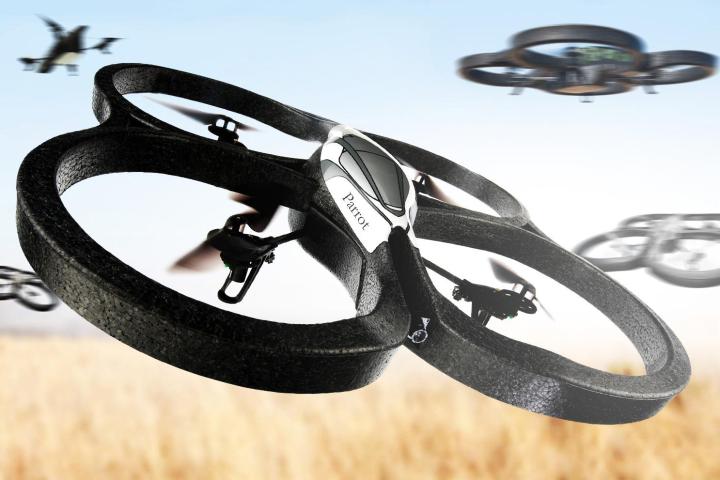
However, once the laws are ironed out and rules put in place, there could come a day when our skies are buzzing with swarms of these unmanned aerial vehicles (UAVs) performing a range of tasks for a huge array of businesses. And with news Monday that NASA is developing a traffic management system for the low-flying aircraft, that day could be closer than you think.
At Moffett Field in southern Mountain View – only a few miles from Google’s Silicon Valley HQ – NASA is examining ways to manage and control drone flights in the skies above the US, according to a NY Times report.
Related: Amazon asks FAA for permission to test its Prime Air drones outdoors
Described as “a separate air traffic control system for things that fly low to the ground – around 400 to 500 feet for most drones,” its implementation could bring order to potentially chaotic skies, increasing safety significantly.
The system, which is still in development, would monitor the skies for other low-flying traffic, and also keep tabs on changing weather conditions, with strong winds proving particularly challenging for drones.
It’d also serve to protect nearby buildings – as well as people in and around them – from the flying machines, with clearly defined no-fly zones issued to all companies utilizing the technology
Instead of air traffic controllers communicating with drone operators, NASA’s system will be entirely computer-based, using carefully designed algorithms to automatically control flights. The system could be implemented as early as next year, with applications including crop monitoring expected.
Speaking to the NY Times about its work, NASA’s Parimal H. Kopardekar said, “One at a time you can make them work and keep them safe. But when you have a number of them in operation in the same airspace, there is no infrastructure to support it.”
NASA’s research certainly appears to be a step in the right direction for the wider use of drone technology, with lawmakers and bodies such as the Federal Aviation Administration no doubt taking a keen interest in how the traffic management system performs.
Editors' Recommendations
- Why the moon needs a space traffic control system
- The world needs a drone traffic control system, so AirMap is building one
- NASA’s Lucy spacecraft could unravel the mystery of how the solar system formed
- NASA’s next generation rocket system is ready for shipping and testing
- FAA proposes nationwide real-time tracking system for all drones


